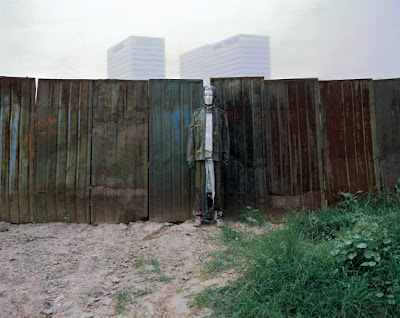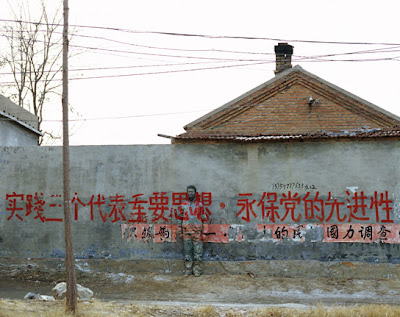sábado, 29 de septiembre de 2012
viernes, 28 de septiembre de 2012
jueves, 27 de septiembre de 2012
Muertes insólitas - Charlotte Mew
Charlotte Mary Mew (Bloomsbury, 15 de noviembre de 1869 – 24 de marzo de 1928) fue una poetisa y cuentista inglesa. Tras la muerte de su hermana, cayó en una honda depresión y la admitieron en una residencia donde acabó suicidándose bebiendo desinfectante vaginal «Lysol».
by PI
| Si quieres comprarlo/If you want to buy | |
Etiquetas:
Cosas Curiosas-Curious Things,
Historia-History
Edificio IAC (Nueva York, Estados Unidos)
Donde está por si queréis viajar/Location to travel
by PI
| Si quieres comprarlo/If you want to buy | |
Etiquetas:
Arquitectura-Architecture
miércoles, 26 de septiembre de 2012
Música y canciones de Castle - 1ª Temporada (Music Songs Castle Season 1)
 |
| Primera Temporada (Season 1) |
1x01 Flores para tu tumba (Flowers For Your Grave)
- When I Grow Up by The Pussycat Dolls
- Stop and Stare by OneRepublic
- So What by P!nk
- Jezebel by Two Hours Traffic
- Food Chain by Eric Hutchinson
- Buy Your Side by Alex & Sam
- Graceland '02 by Brighton, MA
- You're Supposed to Be My Friend by 1990s
- If I Don't by Amp Fiddler featuring Corinne Bailey Rae
- Lovesong by Annie Stela
- Beggar?s Prayer by Emiliana Torrini
- No Envy No Fear by Joshua Radin
- This Old Farmhouse by Scott MacLeod
- 1, 2, 3, 4 by Plain White T's
- Nitro by Dick Dale
- Make You Crazy (feat. Femi Kuti) by Brett Dennen
- Birds of a Feather by The Rosenbergs
- No Escape by Civalias
- Wonderful Night by Fatboy Slim
- You're The One For Me by Joel Evans and Patrick Maier
- Get What I Want by Bitter:Sweet
| Si quieres comprarlo/If you want to buy | |||
Etiquetas:
Música-Music,
Series,
Televisión
Estados Unidos de España - Nuevo México (United States of Spain)
La primera expedición Francisco Vázquez de Coronado reunió una gran expedición en Compostela entre 1540-1542 para explorar y encontrar las Siete Ciudades de Oro míticas de Cíbola que describió Cabeza de Vaca, que acababa de llegar de sus penosas travesías de ocho años viajando de Florida a México. Los hombres de Coronado encontraron varios pueblos de casas de barro cocido en 1541. Más adelante, otras expediciones por el Sur-Oeste o por Grandes Llanuras tampoco consiguieron encontrar las fabulosas ciudades. Un desanimado y ahora pobre Coronado, junto con sus hombres, comenzaron su viaje de vuelta a México dejando atrás Nuevo México. Más de cincuenta años después de Coronado, Juan de Oñate, en una expedición desde Zacatecas, fundó la colonia de San Juan en Río Grande en 1598, la primera población europea permanente en el futuro estado de Nuevo México. Oñate extendió el llamado Camino Real, en más de 600 millas. Oñate fue hecho primer gobernador de la nueva Provincia de Nuevo México. Los indígenas en Acoma se rebelaron contra esta invasión española, pero sufrieron un severo castigo. En 1609, Pedro de Peralta, posteriormente gobernador de la Provincia de Nuevo México, fundó Santa Fe al pie de la sierra de la Sangre de Cristo. Esto se produjo diez años antes de que los primeros colonos ingleses llegaran a las costas de Nueva Inglaterra a bordo del Mayflower, lo cual convierte a Santa Fe en la capital de estado más antigua de los EE.UU. La ciudad, junto con la mayor parte de las áreas colonizadas del estado, fue abandonada por los españoles durante 12 años (1680-1692) a consecuencia de la exitosa Rebelión Pueblo. Los indios pueblo lograron expulsar a los españoles hasta El Paso. Después de la muerte del líder pueblo Popé, Diego de Vargas restauró en 1692 el dominio español en la zona trayendo nuevos colonos y desarrollando a Santa Fe como un centro comercial. Los pobladores que volvieron fundaron la antigua ciudad de Albuquerque en 1706, dándole el nombre del virrey de Nueva España, el duque de Alburquerque. Esta vez se establecieron nuevos acuerdos con los indios, que necesitaban ayuda contra los saqueos de otros indios nómadas, los utes, apaches y comanches, que empezaron a llegar del norte. La consolidación y expansión de la colonia hacia lo que ahora es el sur de Colorado y el este de Arizona continuó durante los dos siglos siguientes.
Francisco Vázquez de Coronado assembled an enormous expedition at Compostela, Mexico in 1540–1542 to explore and find the mystical Seven Golden Cities of Cibola as described by Cabeza de Vaca who had just arrived from his eight-year ordeal traveling from Florida to Mexico. Cabeza de Vaca and three companions were the only survivors of the Panfilo de Narvaez expedition of June 17, 1527 to Florida, losing 80 horses and all the rest of the explorers. These four survivors had spent eight arduous years getting to Sinaloa, Mexico on the Pacific coast and had visited many Indian tribes. Coronado and his supporters sank a fortune in this ill-fated enterprise taking 1300 horses and mules for riding and packing and hundreds of head of sheep and cattle as a portable food supply. Coronado's men found several adobe pueblos (towns) in 1541 but found no rich cities of gold. Further widespread expeditions found no fabulous cities anywhere in the Southwest or Great Plains. A dispirited and now poor Coronado and his men began their journey back to Mexico leaving New Mexico behind. Coronado, however, was highly unlikely to have been the source of the horses that Plains Indians later adopted as the cornerstone of their culture. Only two of Coronado's horses were mares, Over 50 years after Coronado, Juan de Oñate came north from Mexico with 500 Spanish settlers and soldiers and 7,000 head of livestock and founded the first Spanish settlement in New Mexico on July 11, 1598. The governor named the settlement San Juan de los Caballeros. This means "Saint John of the Knights". San Juan was in a small valley. Nearby the Chama River flows into the Rio Grande. Oñate pioneered the grandly named El Camino Real de Tierra Adentro, "The Royal Road," a 700 mile (1,100 km) trail from the rest of New Spain to his remote colony. Oñate was made the first governor of the new province of Santa Fe de Nuevo Mexico. The Native Americans at Acoma revolted against this Spanish encroachment but faced severe suppression. In battles with the Acomas, Oñate lost 11 soldiers and two servants, killed hundreds of Indians, and punished every man over 25 years of age by the amputation of their left foot. The Franciscans found the pueblo people increasingly unwilling to consent to baptism by newcomers who continued to demand food, clothing and labor. Acoma is also known as the oldest continually inhabited city in the United States. Oñate's capital of San Juan proved to be vulnerable to "Apache" (probably Navajo) attacks and a later governor, Pedro de Peralta, moved the capital and established the settlement of Santa Fe in 1610 at the foot of the Sangre de Cristo Mountains.Santa Fe is the oldest capital city in the United States. Peralta built the Palace of the Governors in 1610. Although the colony failed to prosper, some missions survived. Spanish settlers arrived at the site of Albuquerque in the mid-17th century. Missionaries attempted to convert the natives to Christianity, but had little success. The objective of Spanish rule of New Mexico was exploitation of the native population and resources. "Governors were a greedy and rapacious lot whose single-minded interest was to wring as much personal wealth from the province as their terms allowed. They exploited Indian labor for transport, sold Indian slaves in New Spain, and sold Indian products...and other goods manufactured by Indian slave labor." The exploitative nature of Spanish rule involved them in nearly continuous raids and reprisals with nomadic Indian tribes on the borders, especially the Apache, Navajo, and Comanche. Franciscan missionaries came to New Mexico with Onate and a struggle ensued between secular and religious authorities. Both colonists and the Franciscans depended upon Indian labor, mostly Pueblos, and competed with each other to control an Indian population decreasing because of European diseases and exploitation. The struggle between the Franciscans and the civil government came to a head in the late 1650s. Governor Bernardo Lopez de Mendizabal and his subordinate Nicolas de Aguilar forbade the Franciscans to punish Indians or employ them without pay and granted the Pueblos permission to practice their traditional dances and religious ceremonies. The Franciscans protested and Lopez and Aguilar were arrested, turned over to the Inquisition, and tried in Mexico City. Thereafter, the Franciscans reigned supreme in the province. Pueblo dissatisfaction with the rule of the clerics was the main cause of the Pueblo revolt. The Spanish in New Mexico were never able to achieve dominance over the Indian peoples who lived among and surrounded them. The isolated colony of New Mexico was characterized by "elaborate webs of ethnic tension, friendship, conflict,and kinship" between Indian groups and Spanish colonists. Because of the weakness of New Mexico "rank-and-file settlers in outlying areas had to learn to coexist with Indian neighbors without being able to keep them subordinate." The first major challenge to Spanish rule would come from the Pueblo Indians; the second would be an ongoing struggle against the nomadic Indians, especially the Comanche.
by PI
| Si quieres más/If you want to buy | |
Etiquetas:
Historia-History
martes, 25 de septiembre de 2012
lunes, 24 de septiembre de 2012
domingo, 23 de septiembre de 2012
Rabinos ultraortodoxos (Oded Bality)
 |
| Rabinos ultraortodoxos asisten al Siyum Ha’Shas, una celebración que marca el final del ciclo de estudio del Talmud, que concentró a más de 30.000 personas en el estadio Teddy de Jerusalén. Las 2.711 páginas del Talmud se estudian por orden, una cada día, y el proceso dura siete años y medio. |
by PI
Etiquetas:
Fotografía-Photography
Suscribirse a:
Comentarios (Atom)
















































